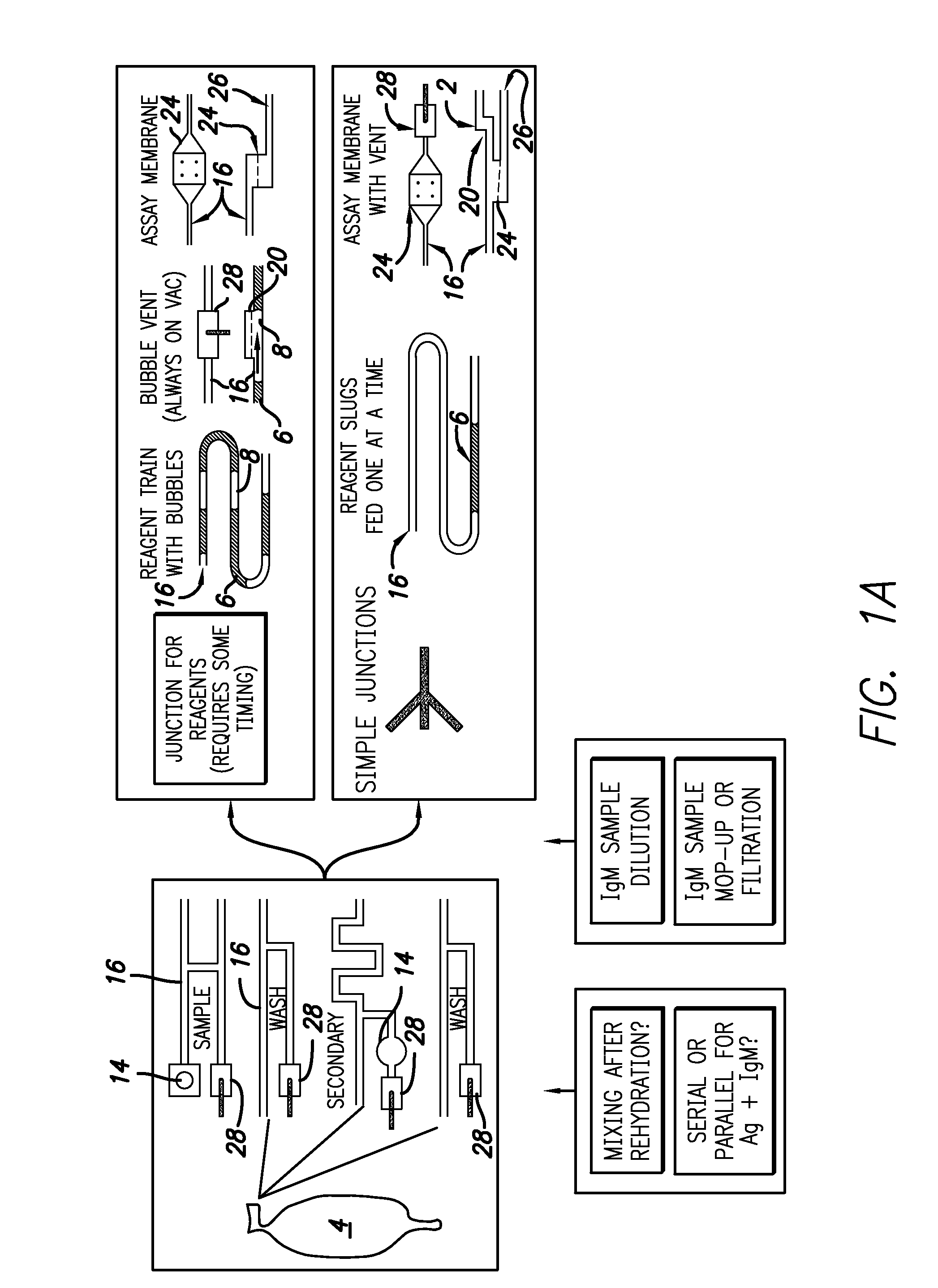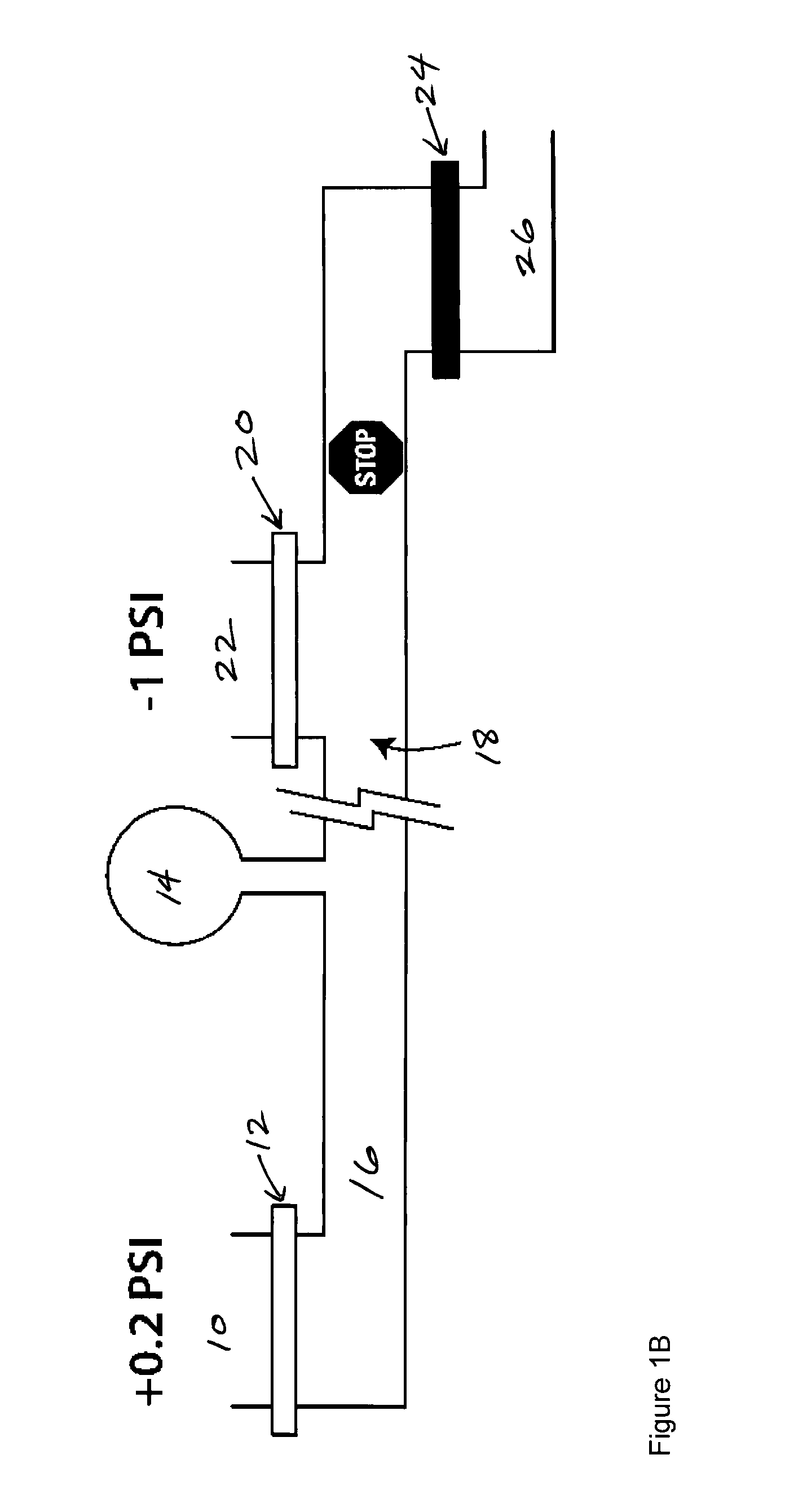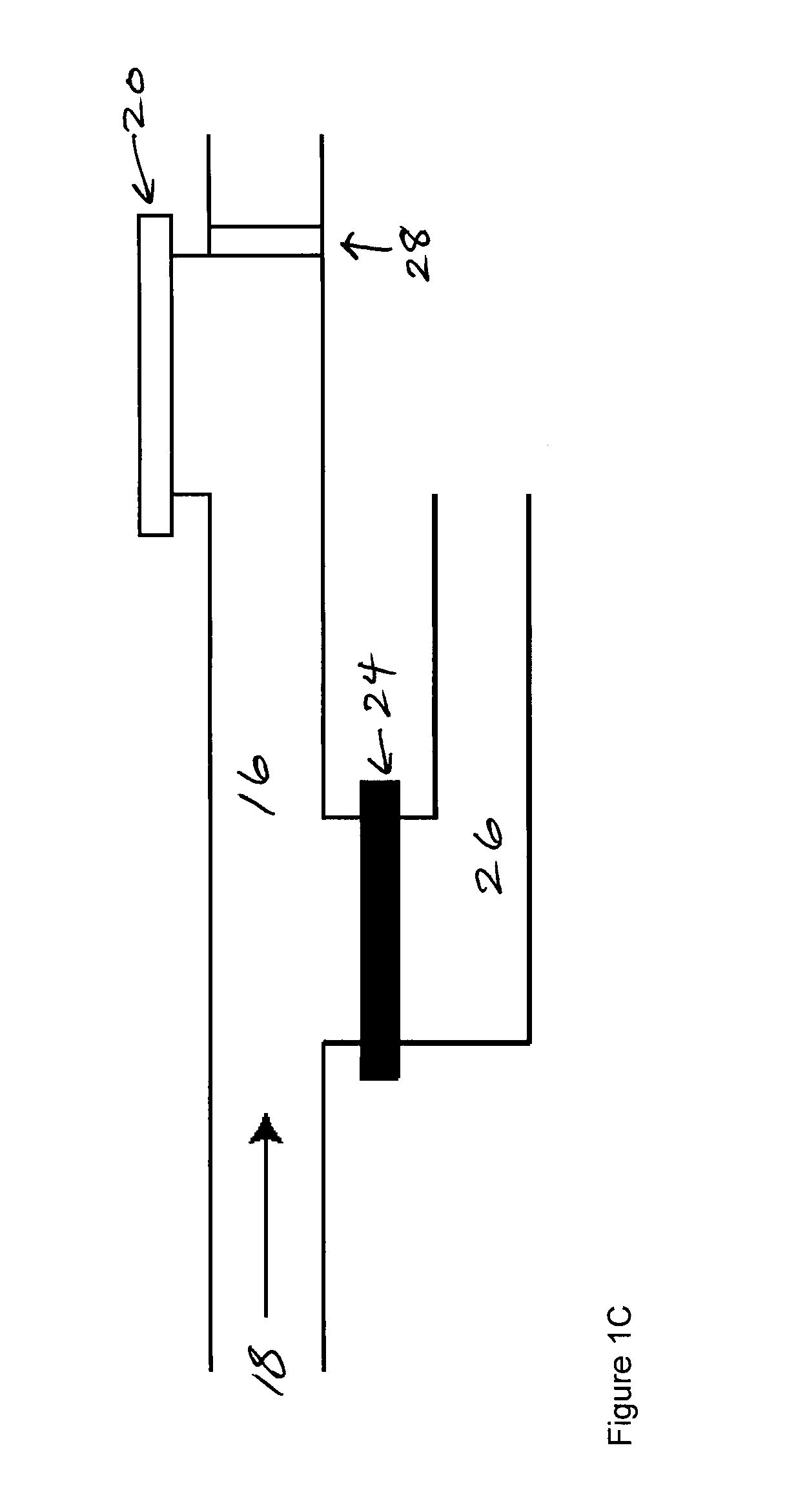Microfluidic systems incorporating flow-through membranes
a technology of flow-through membranes and microfluidic systems, which is applied in the direction of instruments, suspensions and porous materials analysis, material analysis, etc., can solve the problems of limiting the control of assay conditions and not allowing individual control of binding reactions, and achieves rapid, accurate and controlled manners
- Summary
- Abstract
- Description
- Claims
- Application Information
AI Technical Summary
Benefits of technology
Problems solved by technology
Method used
Image
Examples
example 1
Venting Air Away from Assay Membrane
[0050]Three approaches to venting air away from the assay membrane to facilitate regulated fluid flow across the membrane are summarized. One approach involves diverting air between fluids to a channel upstream of the assay membrane. This approach is described in greater detail in Example 5 below entitled “Enabling a microfluidic immunoassay for the developing world by integration of on-card dry-reagent storage”. See also “Air removal by waste channel upstream of the assay membrane” appended to this document. A second approach relates to venting air between fluids through a hydrophobic membrane upstream of the assay membrane, and a third to venting trapped air through a hydrophobic membrane downstream of the assay membrane.
[0051]A general description of a card design for flow-through-membrane assay is illustrated in FIG. 1A. Individual fluids delivered to the membrane are likely to be separated from one another by air. Since the air cannot pass th...
example 2
Enabling a Microfluidic Immunoassay for the Developing World by Integration of on-Card Dry-Reagent Storage
[0057]This example describes a microfluidic flow-through membrane immunoassay with on-card dry reagent storage. By preserving reagent function, the storage and reconstitution of anhydrous reagents enables the devices to remain viable in challenging, unregulated environmental conditions. The assay takes place on a disposable laminate card containing both a porous membrane patterned with capture molecules and a fibrous pad containing an anhydrous analyte label. To conduct the assay, the card is placed in an external pumping and imaging instrument capable of delivering sample and rehydrated reagent to the assay membrane at controlled flow rates to generate quantitative results. Using the malarial antigen Plasmodium falciparum histidine-rich protein II (PfHRP2) as a model, this example demonstrates selection of dry storage conditions, characterization of reagent rehydration, and exe...
example 3
Rapid Air-Driven Point-of-Care Malaria Detection
[0127]This example demonstrates pneumatically actuated microfluidic cards that provide an inexpensive multiplexable platform for the point-of-care (POC) detection of disease, exemplified here for malaria (P. falciparum), in under nine minutes. Reagent volumes are metered and sequentially driven through a porous membrane used as a flow-through substrate for a sandwich immunoassay (SIA). An initial test of 500 ng / mL PfHRPII spiked into human plasma produced signal intensity six times greater than the local background. This successful test demonstrates the conversion of a multi-step benchtop immunoassay into a fully-automated microfluidic format while retaining the potential to be quantitative.
[0128]These microfluidic cards use a novel flow-through membrane format controlled by a fully automated, pneumatically driven system. The SIA is performed on the surface of a porous membrane that the reagents flow through. The small pores decrease d...
PUM
 Login to View More
Login to View More Abstract
Description
Claims
Application Information
 Login to View More
Login to View More - R&D
- Intellectual Property
- Life Sciences
- Materials
- Tech Scout
- Unparalleled Data Quality
- Higher Quality Content
- 60% Fewer Hallucinations
Browse by: Latest US Patents, China's latest patents, Technical Efficacy Thesaurus, Application Domain, Technology Topic, Popular Technical Reports.
© 2025 PatSnap. All rights reserved.Legal|Privacy policy|Modern Slavery Act Transparency Statement|Sitemap|About US| Contact US: help@patsnap.com



